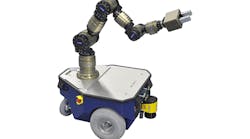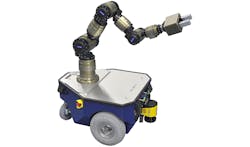For collaborative robots, some of the same sensing technologies are simply retooled to react to employees rather than parts; for example photo sensors, inferred indicators, and laser proximity technology. Other technologies have been adapted specifically for collaborative robots. Measuring the electrical resistance across a joint in a robot could indicate something or someone has come into contact with it, and a safety stop can be performed. A risk assessment is still important as the robot might be handling something sharp where any contact could be dangerous.
Another reinvention that is being seen in the market is Doppler technology from the 1940s. Some systems are able to detect animate objects up to 16 feet away and, unlike many other machine-vision technologies, they don’t need any light. With the ability to detect movement of about 3/4th of an inch even if a worker stops moving in a dangerous zone, the machine vision will still see them if they are breathing. Olea Sensor Networks has developed a system that is able to recognize returning scatter patterns of radio frequencies, allowing it to recognize different materials like wood, concrete, and even flesh. This is all designed for the integration of people with robots in a safe and efficient way.
Safety is always a concern. Even with all the technology, the number of workplace injuries is staggering. According to the Bureau of Labor Statistics, in 2013 over 3 million employees were injured on the job. It was also reported that over half of these injuries were serious enough to require time away from work.
Recently, a man was killed in an automotive assembly plant in Germany. According to the Associated Press, the 22-year-old worker in a Volkswagen plant was helping to put together the stationary robot that grabs and configures auto parts when the machine grabbed and pushed him against a metal plate. He later died from the injuries. While the company points to human error, this is still a tragic reminder that as people and robots work closer together it is imperative for engineers designing equipment such as this to make worker safety the most important part of the design.

